Sigmund Freud Was a Revolutionary Everywhere but at Home
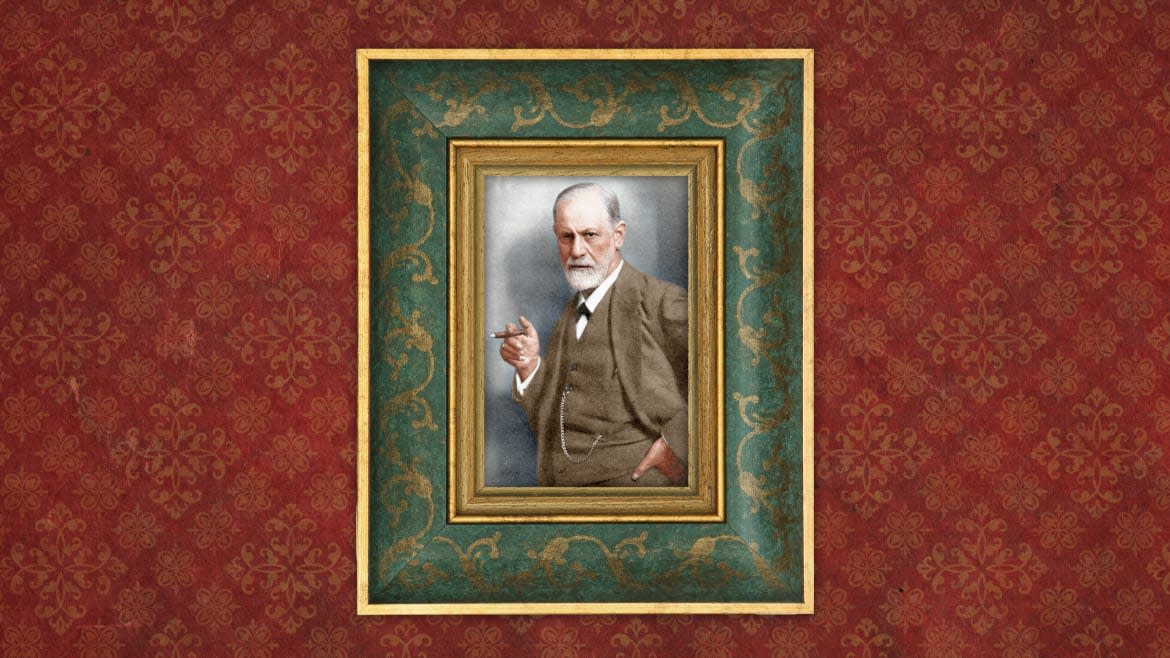
- Oops!Something went wrong.Please try again later.
At the turn of the last century, Sigmund Freud shocked the world with what biographer Peter Gay called “his portrayal of man, the insatiable animal pushed and pulled by unrespectable, largely unconscious, desires and aversions.” Heavily emphasizing the role of childhood sexuality, repressed memories, dreams, fantasies, and narcissism, Freud invented the term “psychoanalysis” and offered what appeared to be a bewildering glimpse into the previously uncharted subconscious territory of the human mind.
This made him into a truly revolutionary figure. His impact on the thinking of his contemporaries, and on subsequent generations, can hardly be exaggerated.
Yet as I dug deeper into his life and views as part of my research for my new book Saving Freud: The Rescuers Who Brought Him to Freedom, I was repeatedly struck by the contrast between the audaciousness of his ideas and the conservatism of his instincts, manifested by his traditional lifestyle and outlook on a broad range of issues. In short, I would call Freud a conservative revolutionary—an oxymoronic term, to be sure, but an accurate one in his case.
Everything about Freud’s life signaled the “conservative” part of that description. He was firmly ensconced in Vienna, which had been a major center of cultural—and Jewish—life in Europe for centuries. Freud was not at all religious, but he always acknowledged his Jewish heritage and identity. He respected tradition and was fascinated by history.
Mexico’s Little-Known Attempt to Save Freud From the Nazis
The precise center of Freud’s universe was Berggasse 19, his longtime residence and office where he and his wife Martha raised six children. It was also where he saw his patients, wrote his essays and books, and met on Wednesday evenings with the members of the Vienna Psychoanalytic Society.
He was wedded to rituals: a daily visit to or from his barber to attend to his hair, beard, and mustache; a rigid schedule of meals; evening walks on the Ringstrasse, the horseshoe-shaped grand boulevard that was constructed on orders from the Habsburg emperor Franz Josef in the second half of the nineteenth century; and visits to the city’s famed cafes, where he would smoke cigars and read the newspapers. In short, he had no problem developing his revolutionary theories while subscribing to the German saying “Ordnung muss sein,” which translates roughly as “There must be order.”
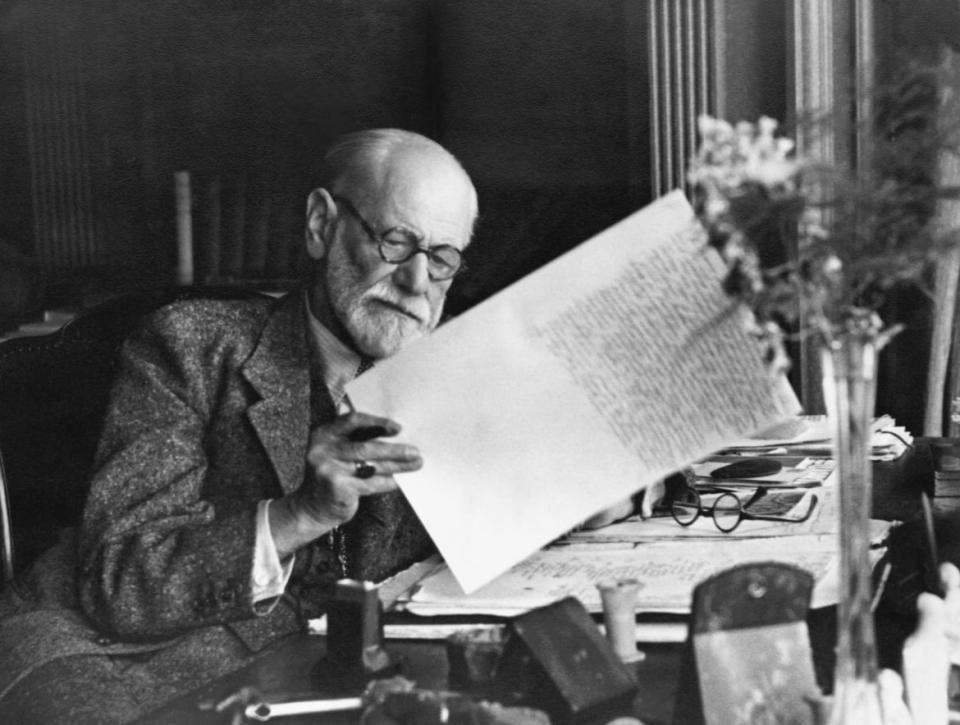
Sigmund Freud looking through a manuscript in the office of his Vienna home.
In the Third Reich, those words would take on a much more sinister connotation, but in earlier times in Vienna they could coexist with generally tolerant social norms—and Freud’s relentless exploration of once taboo subjects. The latter sparked some of the most egregiously wrong perceptions of him.
Critics like Moses Allen Starr, an American neurologist who worked with him briefly in Vienna, blamed his insistence that sexual drives explained human behavior on “the peculiar life he led” in the Austrian capital. Speaking to his New York colleagues in 1912, he portrayed Freud as a product of his allegedly sordid surroundings. “Vienna is not a particularly moral city,” he asserted. “Freud was not a man who lived on a particularly high moral plane. He was not self-repressed…” In other words, he was a dissolute man working in a dissolute city.
Nothing could be further from the truth. Freud denounced what he viewed as society’s hypocritical posturing about sex. “I stand for an infinitely freer sexual life, although I myself have made very little use of such freedom,” he declared. If anything, this was an understatement: nothing better illustrated the split between his daring theories and his private behavior than the broad hints he dropped about his sexual life in his letters and other writings.
During his medical studies, one of his professors dispatched him to Trieste for a research project in the laboratory of the University of Vienna’s marine biology station there. He was twenty at the time, and his assignment was to check on the claim of a Polish scientist that he had solved the mystery of how eels reproduce by locating their gonads. That meant dissecting more than four hundred eels before he located their elusive reproductive organs. While that was considered a notable accomplishment, equally notable were his observations about the Adriatic port city’s other attractions.
Writing to a friend, he mentioned the “Italian goddesses” he came across in his walks around town. But he pointed out that he kept his distance. “Since it is not permitted to dissect humans, I have in fact nothing to do with them,” he wrote, attempting to make light of his bashfulness.
Six years later he met Martha Bernays while she was visiting Vienna. Instantly smitten, he proposed and she accepted. But their physical separation—she was still living with her widowed mother in northern Germany, while he was living with his parents in Vienna—meant that they saw little of each other during their four-year engagement while he struggled to prepare for a medical career that would allow him to support a family. During their long separation, he was the totally devoted, possessive suitor, explaining that she was “like a jewel I have pawned and that I am going to redeem as soon as I am rich.”
Their marriage lasted fifty-three years, until the end of his life in 1939. When radicals like Max Eastman, the editor of the leftist Greenwich Village magazine The Masses, visited Freud in 1926, he was struck by the fact that he was “a prude and a puritan, a fanatical monogamist.” In fact, Freud commented about his “petit bourgeois” family life to his followers who often had very different expectations of him.
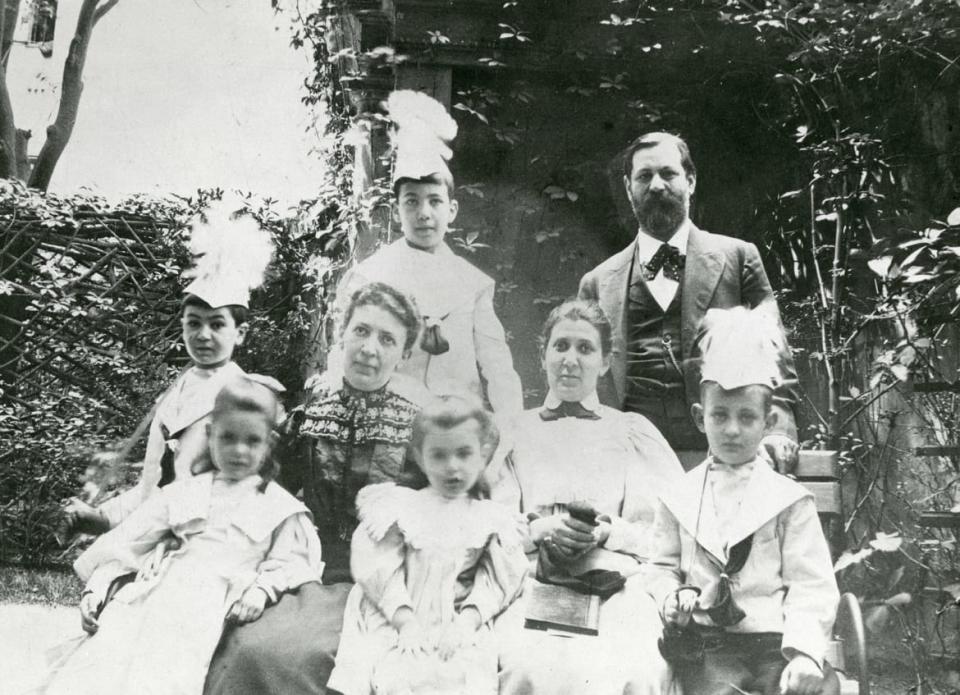
Sigmund Freud with his wife, Martha, sister-in-law Minna Bernays, and children Oliver, Ernst Ludwig, Sophie, Anna, and Martin, in 1898, in Vienna, Austria.
During his engagement to Martha, he had already written to her about his “old ways,” especially when it came to the role of women. He considered it “a completely unrealistic notion to send women into the struggle for existence in the same way as men” and he vowed to do everything to keep her out of that struggle, allowing her to remain in “the quiet, undisturbed activity of my home.” But Freud’s combined residence and office was hardly a quiet home, and she orchestrated all its complicated logistics, serving as its de facto manager.
At the same time, Freud admired women like Marie Bonaparte, the great-grandniece of Napoleon and the wife of Prince George of Greece and Denmark, first a patient and then a close colleague who became a noted psychoanalyst in her own right and avid proponent of his theories. He was stuck by the fact that she had “no prudishness whatsoever,” freely discussing her string of lovers along with her sexual frustrations and fantasies. Yet he admitted to her that he would never want one of his daughters to have an affair. He understood his own contradictions.
Similarly, he was awed by Lou Andreas-Salomé, a Russian-German writer who also had numerous very public affairs while married to a professor at the University of Göttingen. She had taken up with such famous figures as the philosopher Friedrich Nietzsche and the poet Rainer Maria Rilke, who also became the subject of her books. When she went to Vienna to meet Freud and observe his methods in 1912, she completely won him over. He called her “a female of dangerous intelligence.” From then on, he valued her as a colleague and friend, “a muse,” with no amorous component of their relationship.
Freud was also out of step with many of his intellectual contemporaries who were quick to condemn the old political order and too quick, in his view, to embrace new doctrines. He had little patience for what in a later era would be called radical chic.
Under the Habsburgs, Freud considered himself a proud patriot of the Austro-Hungarian empire, the sprawling home to fifty million people who represented at least nine major nationalities and numerous minorities. The Habsburg rulers granted their diverse subjects limited yet impressive autonomy. Comfortably ensconced in imperial Vienna, Freud was slow to recognize the intensity of the accumulating tensions that finally produced World War I and the subsequent dismemberment of the empire, leaving only a rump Austria.
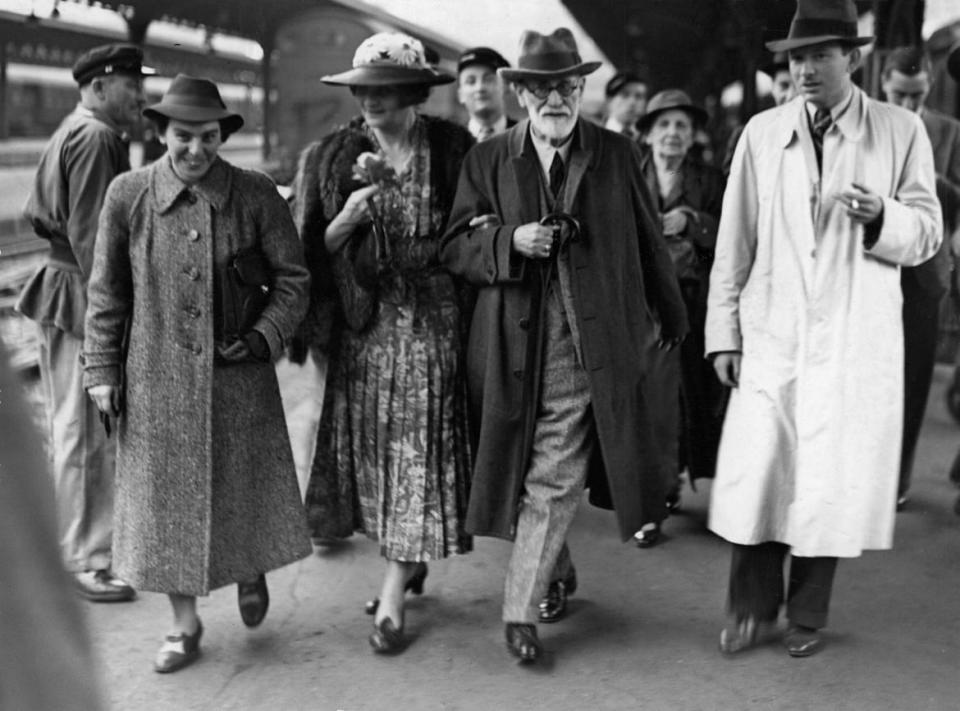
Sigmund Freud, center, arrives in Paris after leaving Vienna en route to London in June 1938. He is accompanied by his daughter Anna, left, Marie Bonaparte, center left, and her son Prince Peter of Greece, right.
Eastman, the editor of The Masses, had visited him after spending two years in Russia observing the aftermath of the Bolshevik Revolution, which many Western intellectuals still viewed as a noble experiment. The American defended the new rulers in the Kremlin, which intrigued his host. “You believe in liberty and there you get just the opposite,” Freud asserted.
Eastman offered what he later admitted was a “glib explanation” that the Bolsheviks’ dictatorial methods were only a transitional phase to be followed by “more real and universal liberty.” Freud was not impressed. “People who are going to produce liberty some time in the future are just the same to me as people who are going to have it ready for you in a celestial paradise,” he declared.
In 1934, another American, Joseph Wortis, came to be analyzed by Freud as part of his training to become a psychiatrist. He, too, discovered that, despite his instructor’s protestations that he had no knowledge of epic events like the Bolshevik Revolution (“it’s all terra incognita to me,” he said), Freud proceeded to make similar points to the ones he did with Eastman. As much as he was repulsed by Hitler’s Nazi regime and its racist ideology, he was no less critical of the dictatorship further east.
“Don’t you think there’s a lot of admirable idealism behind the Russian Revolution?” Wortis asked. Freud responded: “Of course, but it’s an empty idealism, it’s based on vague abstractions… A person must have some incentive to work well.” Most importantly, he added, “The cost of Communism to intellectual freedom is too great. Communism means an intellectual dictatorship; it is not compatible with psychoanalysis because it is too dogmatic.”
Freud was also completely unapologetic about his support for the alternative system. “I find capitalism quite satisfactory,” he said. “I think the discovery of money was a great cultural advance,” although he conceded that “one ought to regulate the production and distribution of wealth more satisfactorily.”
But that did not mean he was in favor of the government taking over private enterprises. “Everything run by the government is bad,” he declared, pointing out that the Italian government produced abysmal matches. “You can use three of them before you get a light.” This was a matter close to his heart, as was Austria’s tobacco monopoly, which produced such poor-quality tobacco that he had look elsewhere for good cigars.
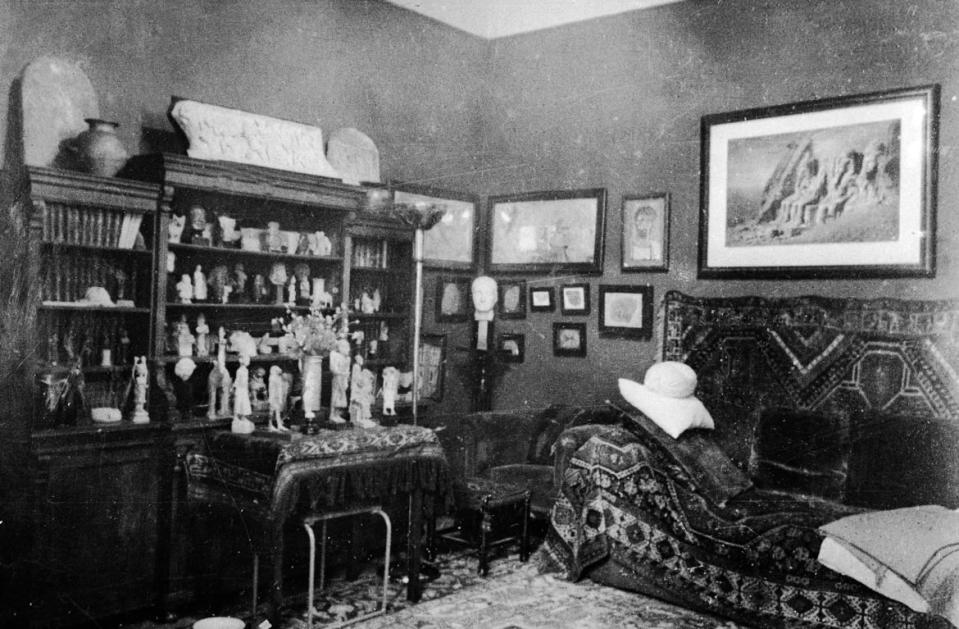
The study used by Sigmund Freud in Vienna, Austria, during the 1910s.
When Wortis pointed out that the American government did a good job running the post office, Freud was unconvinced. “Maybe,” he said, “but I assure you a private concern would do no worse.”
Those were relatively rare conversation topics for Freud, who was always focused on his work and more comfortable discussing human sexuality, including those manifestations that most Western societies classified as deviant behavior in that era. Wortis asked him why there was so much hostility to homosexuality. “It was always so, even in ancient Greece,” Freud replied, explaining that everyone has a homosexual component. “People repress their own homosexuality and if the repression is strong enough, they adopt a hostile attitude.”
He described homosexuality as “something pathological” and “arrested development,” but warned against the misuse of psychoanalysis in such cases. “The only homosexuals one can attempt to cure are those who want to be changed,” he said. Without a trace of disapproval, he added, “One often has the experience of starting an analysis with a homosexual who then finds such relief in being and talking just as he is that he drops analysis and remains homosexual.” He added that “the perversion which is most repellent to us, the sensual love of a man for a man, was not only tolerated by a people so far our superiors in cultivation as were the Greeks, but was actually entrusted by them with important social functions.”
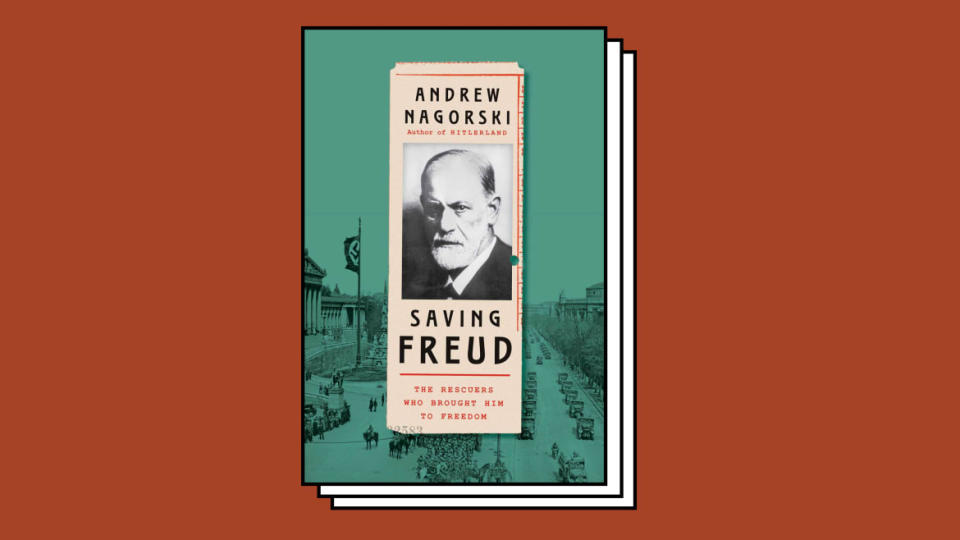
While Freud’s use of a term like “perversion” sounds jarring to the modern reader, his message was that those were society’s labels; his own ideas were far more complex than that. “The sexual life of each of us extends to a slight degree—now in this direction, now in that—beyond the narrow lines imposed as the standard of normality,” he declared.
Like many of his patients, Freud could not be easily categorized. The attempts to describe him as either a “conservative” or “revolutionary” creates misleading impressions. What he did demonstrate was that a revolutionary thinker could also be a conservative at heart and in his lifestyle, one who believed in genuine tolerance and the freedom of everyone to make their own choices. That was also a revolutionary idea at the time.
This essay is adapted from Andrew Nagorski’s new book, Saving Freud: The Rescuers Who Brought Him to Freedom (Simon and Schuster, 2022).
Get the Daily Beast's biggest scoops and scandals delivered right to your inbox. Sign up now.
Stay informed and gain unlimited access to the Daily Beast's unmatched reporting. Subscribe now.

